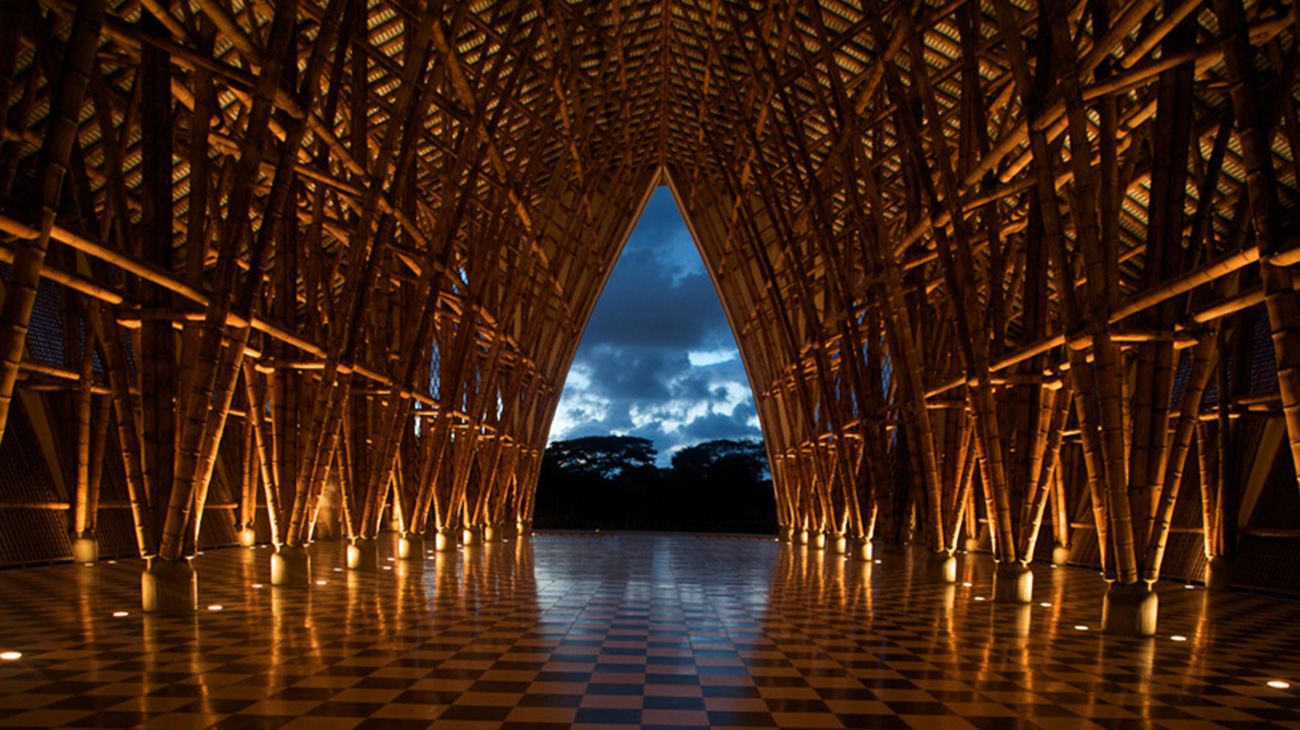Simón Vélez: Bamboo structures
Simón Vélez lectures on the use of bamboo in his work.
March 14, 2011
7:00 p.m.
Current Work is a lecture series featuring leading figures in the worlds of architecture, urbanism, design, and art.
Simón Vélez, architect and pioneer in the contemporary use of bamboo as an essential building component, will present and discuss his recent work.
Simón Vélez’s achievement utilizing bamboo as a desirable structural material for architecture grew out of close collaborations and relationships onsite. Often working in rural areas, Vélez capitalized on the lack of regulating authority and the relative difficulty of importing standard building materials such as brick and mortar to experiment with locally available materials. With Marcelo Villegas, he developed a mortar-filled joinery system that allows long-span and cantilevered structures to be built out of bamboo. By building only with his own well-trained crew of workers, Vélez has been able to draw upon past successes and failures in detailing. He intentionally keeps drawings simple, usually freehand on single sheets of 8×11 inch graph paper.
Completed work ranges from low-cost houses that can be built by their inhabitants to large-scale pavilions and commercial projects including a bamboo pavilion for the Expo Hanover 2000; the Zócalo Nomadic Museum in Mexico City, which houses Gregory Colbert’s “Ashes and Snow”; and a bridge for Crosswaters Ecolodge, the largest commercial project in the world to use bamboo. The project received the American Society of Landscape Architects 2006 Analysis and Planning Award of Honor. In December 2009, he received The Principal Prince Claus Award for his contribution to a positive interaction between culture and development.
Simón Vélez graduated from the University of Colombia in Bogotá, where he lives and has practiced architecture for more than 40 years.
Moderated by Nat Oppenheimer. Oppenheimer is a principal at Robert Silman Associates and is treasurer of The Architectural League.
Support
This lecture is co-sponsored by The Cooper Union Institute for Sustainable Design.
The League gratefully acknowledges Alan Wanzenberg for his support of this program. This program was made possible in part by public funds from the National Endowment for the Arts; the New York State Council on the Arts, a State Agency; and the New York City Department of Cultural Affairs, in partnership with the City Council.



Explore
Material tour de force: The work of Eladio Dieste
Julian Palacio visits Uruguay to examine the material and structural innovation of the work of engineer Eladio Dieste.
Anna Heringer: Sustainability=Beauty
The German architect speaks about her love of mud as a building material.
Mexico’s Traditional Housing Is Disappearing—and with It, a Way of Life
Mariana Ordóñez Grajales and Onnis Luque are fighting to preserve their country's vernacular architecture.

